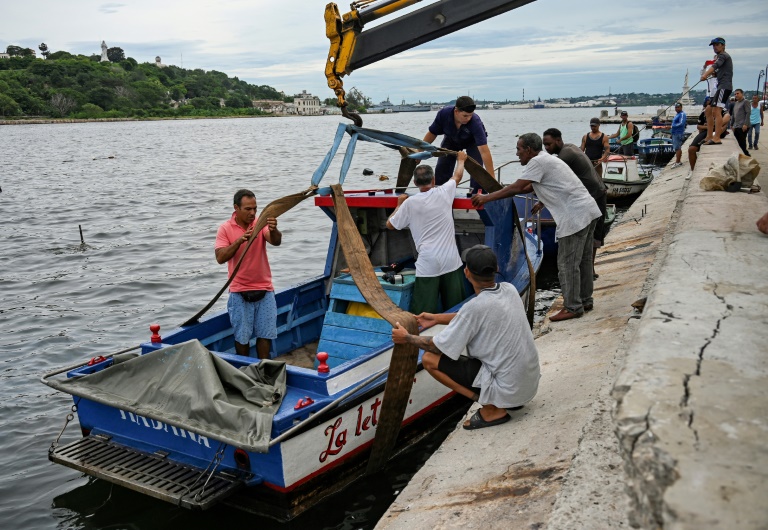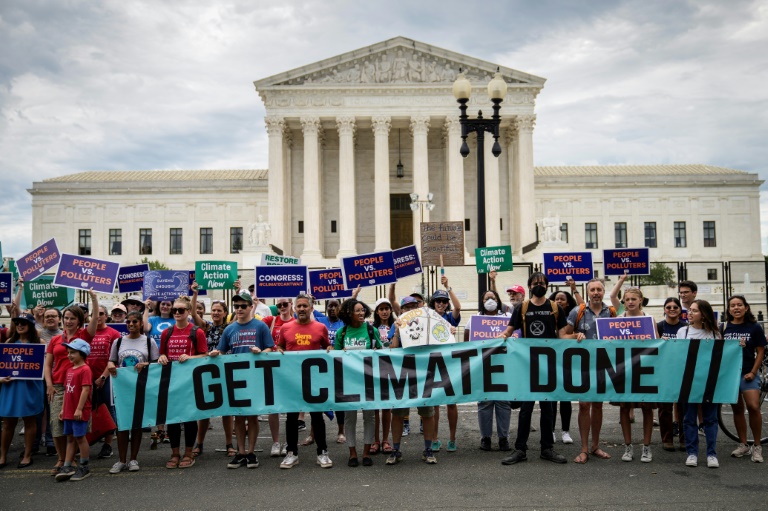Hurricane Ian hits Cuba as Category 3 storm
People pull small boats out of Havana Bay on Monday before Hurricane Ian hit Cuba
Hurricane Ian made landfall in western Cuba early Tuesday, with the storm prompting mass evacuations and fears it will bring widespread destruction as it heads for the US state of Florida.
“Ian is already over Cuban territory,” said a forecaster from the country’s Institute of Meteorology in a special broadcast on state television. “The outer wall of the storm is on the coast of the province of Pinar del Rio.”
About 38,000 people had been evacuated from their homes in the province, which was bearing the brunt of the storm, local authorities said.
The US National Hurricane Center (NHC) said Ian made landfall just southwest of the town of La Coloma at about 4:30 am local time (0830 GMT).
The hurricane was packing maximum sustained winds of 125 miles (205 kilometers) per hour, the NHC said, making it a Category 3 storm on the Saffir-Simpson scale.
“Devastating wind damage is expected where the core of Ian moves across western Cuba this morning,” it added.
– ‘Storm surge’ –
With the hurricane moving north, Florida’s western coast from Fort Myers to Tampa Bay were at greatest risk of “life-threatening” storm surges, the NHC said.
Florida Governor Ron DeSantis declared a state of emergency in all 67 counties as officials scrambled to prepare for the storm’s forecast landing on Wednesday or Thursday.
Ian “will bring heavy rains, strong winds, flash flooding, storm surge, along with isolated tornado activity along Florida’s Gulf Coast,” DeSantis said at a press conference in Tallahassee on Monday.
He warned people to prepare for power cuts.
“Even if the eye of the storm doesn’t hit your region, you’re going to have really significant winds, it’s going to knock over trees, it’s going to cause interruptions,” DeSantis said, warning of likely flooding.
The governor urged residents to stock up on food, water, medicine and fuel, and he called up 7,000 National Guard members to help with the effort.
Authorities in several Florida municipalities, including Miami, Fort Lauderdale and Tampa, started distributing free sandbags to residents to help protect their homes from the risk of flooding.
Tampa International Airport said it would suspend operations on Tuesday at 5:00 pm local time (2100 GMT).
US President Joe Biden approved emergency aid to 24 counties in Florida through the Federal Emergency Management Agency (FEMA).
NASA said it was rolling back its massive Moon rocket into its storage hangar at the Kennedy Space Center in Florida due to the hurricane.
– Fiona’s wake –
The Caribbean and parts of eastern Canada are still counting the cost of powerful storm Fiona, which tore through last week, claiming several lives.
When it arrived in Canada, the storm packed intense winds of 80 miles per hour, bringing torrential rain and waves of up to 40 feet (12 meters).
Three people are believed to have died when Fiona barreled into Canada’s Atlantic provinces as a post-tropical cyclone early Saturday.
Prince Edward Island authorities confirmed the death of one person, while officials in Newfoundland said they found the body of a 73-year-old woman believed to have been swept from her home. She was apparently sheltering in her basement when waves broke through.
A third person has been reported missing in Nova Scotia — one of the hardest-hit provinces — and is presumed dead.
“The devastation is immense,” Nova Scotia Premier Tim Houston told reporters. “The magnitude of the storm is incredible.”
Storm surges swept at least 20 homes into the sea in the town of Channel-Port aux Basques, on the southwestern tip of Newfoundland.
Around 200 residents had been evacuated before the storm hit.
“Some people have lost everything, and I mean everything,” Mayor Brian Button told CBC News.







